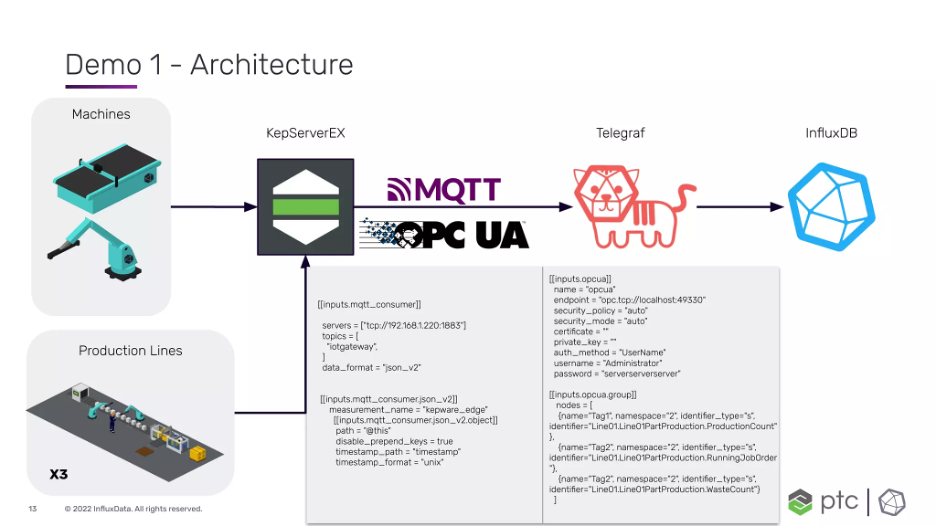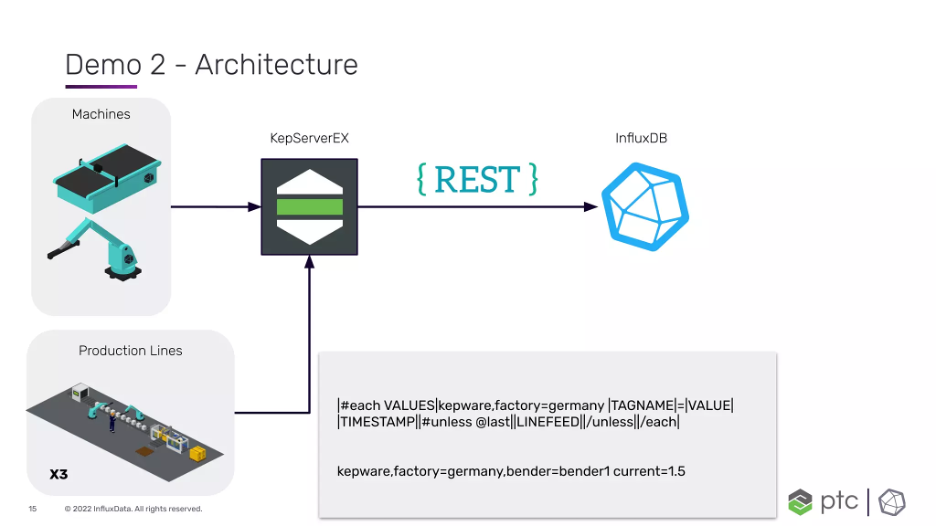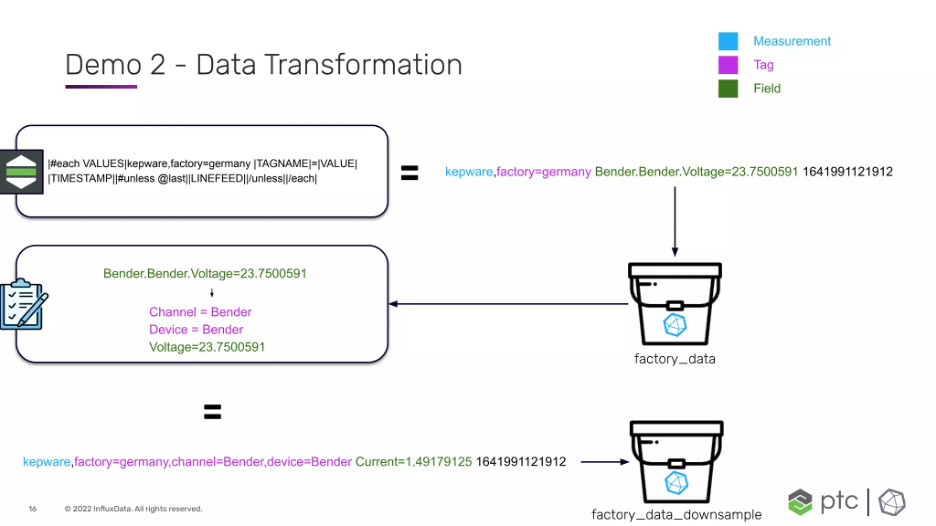How to Use InfluxDB and PTC ThingWorx for Industrial IoT | SPONSORED
One of the biggest challenges of implementing a digital transformation program is integrating with legacy systems for data collection. Another major challenge is presented in storing and utilizing that data to extract business value.
In this article, you will learn about InfluxDB and PTC ThingWorx, and how you can use them together to simplify IIoT.
What is PTC ThingWorx?
PTC ThingWorx is a complete IIoT platform that helps businesses accelerate their digital transformation by easing implementation and reducing technical barriers to adoption. ThingWorx provides solutions for connecting and collecting data from devices, making it easy to store, analyze, and build applications that take advantage of that data.
What is InfluxDB?
InfluxDB is a time series database designed for time series data, typically seen in IIoT use cases. InfluxDB can handle massive write volumes while serving query responses in under a second. InfluxDB also provides features out of the box for common use cases in time series data like retention policies or downsampling.
Integrating PTC ThingWorx and InfluxDB
InfluxDB can be integrated with ThingWorx using a persistence provider integration developed and supported by PTC. PTC recommends InfluxDB for any workload that involves large amounts of time series data—PTC cloud then deploys InfluxDB behind the scenes.
A commonly used architecture is to deploy ThingWorx at the edge, where it can collect device data. You can forward this data to a Telegraf agent via OPC UA or MQTT. Telegraf can then process and transform the data before sending it to InfluxDB.

Another option is to have ThingWorx send data directly to InfluxDB via API. This includes open source instances of InfluxDB deployed at the edge and cloud instances of InfluxDB.

Many customers use both edge and cloud, storing and analyzing data in real-time using InfluxDB at the edge to reduce latency and downsampling for long-term storage and historical analysis in InfluxDB cloud
Benefits of using InfluxDB and PTC ThingWorx together
Now that you’ve seen a few ways that real-world businesses are combining InfluxDB and ThingWorx, let’s take a deeper look at what motivates them to use these tools.
Improved operational efficiency
Collecting and analyzing more data in real-time improves overall operational efficiency, enabling companies to make better decisions, build more reliable products, and solve problems before they escalate.
Cost savings
InfluxDB is designed for storing and querying time series data generated by IoT applications and provides related cost-savings. This is mostly achieved through hardware savings—InfluxDB has higher data compression and more efficient queries than general-purpose databases, allowing it to perform better with less required hardware.
Faster implementation speed
InfluxDB and PTC ThingWorx make it easier for companies not specialized in software to implement and roll out digital transformation projects. Thingworx streamlines the data collection process, and InfluxDB makes scaling hassle-free.
Security
ThingWorx provides several ways to ensure the security of users’ data with support for read/write access, encryption, and user access levels. InfluxDB is available as an on-prem or cloud solution and, depending on user needs, can even be deployed in air-gapped networks at the edge.
Conclusion
The combination of InfluxDB and PTC ThingWorx is a game-changer for companies looking to harness the full potential of their IoT data. This integration improves operational efficiency and reduces costs while speeding up IoT deployment and boosting developer productivity. By enabling enhanced data insights in a scalable way, businesses can meet current demands and future challenges, positioning themselves at the forefront of their industries.
About the author
 This article was written by Charles Mahler is a Technical Writer at InfluxData where he creates content to help educate users on the InfluxData and time series data ecosystem. Charles’ background includes working in digital marketing and full-stack software development.
This article was written by Charles Mahler is a Technical Writer at InfluxData where he creates content to help educate users on the InfluxData and time series data ecosystem. Charles’ background includes working in digital marketing and full-stack software development.




